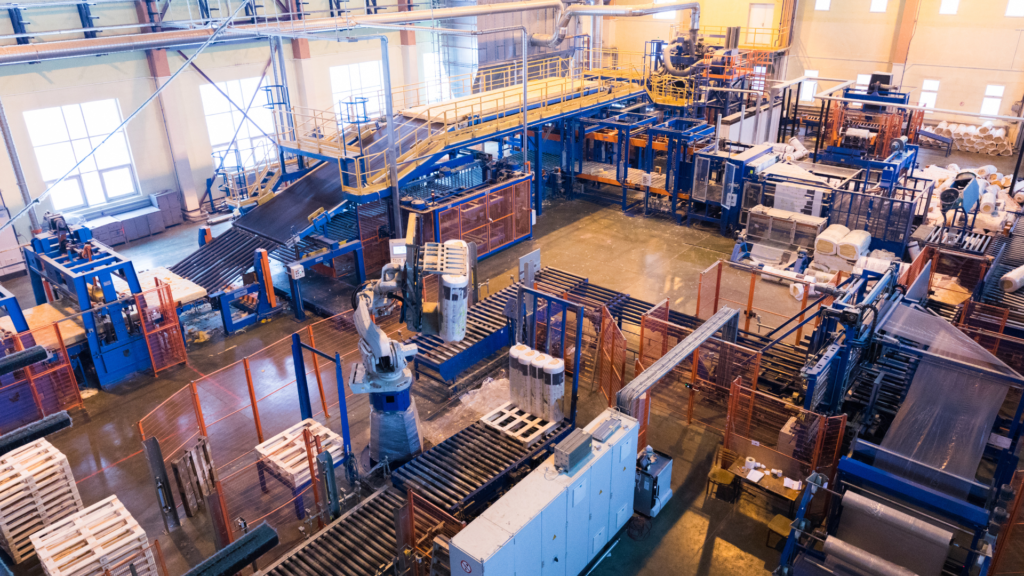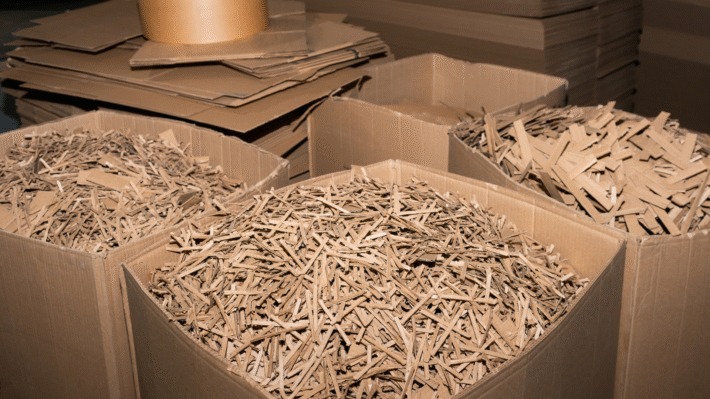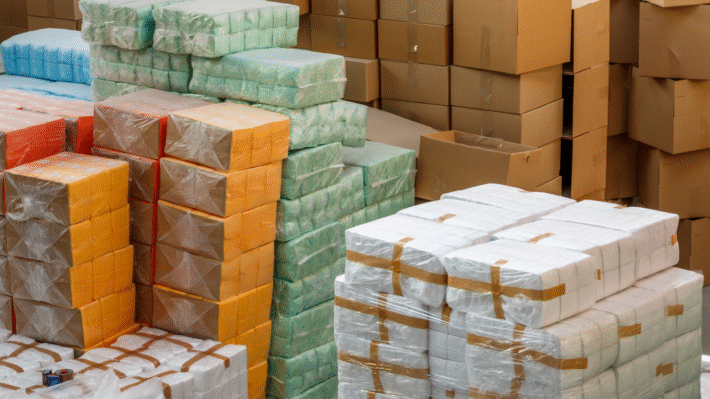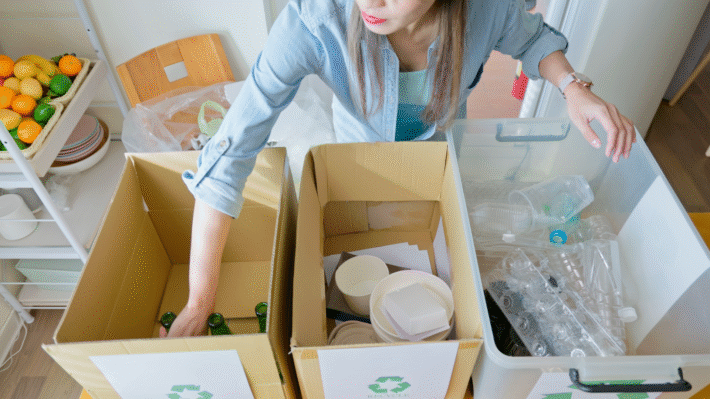Unlocking Circular Economy Benefits with Slaughterhouse Byproducts by Generating Sustainable Gelatin, Collagen, and Protein-Rich Feedstocks

Welcome to the fantastic world of creating circularity in slaughterhouse byproducts supply chain! Let’s face it, folks—we all know there’s a problem with underutilizing and wasting these byproducts. But here’s some breaking good news: they’re far from garbage! Instead, they are treasure troves packed with gelatin, collagen, and protein-rich feedstocks, just begging to be unlocked. By harnessing circular economy principles, we can turn the problem of waste into the solution of resource regeneration. Get ready, my friends, as we embark on an enlightening journey on powering the next revolution of the circular economy in the slaughterhouse industry with practical insights and empowering strategies. Hold onto your hats – It’s time to close the loop and pave the path to sustainability!
Understanding Slaughterhouse Byproducts
Slaughterhouses aren’t just meat-producing factories. They also generate different types of byproducts from the parts of animals not directly used for food. This substantial stream of byproducts poses a significant challenge but also offers opportunities for waste minimization and resource utilization.
Types of Byproducts
Bones and Hides
Bones, from poultry, cattle, pigs or sheep, contain marrow and gelatin which are nutrient-rich and often underutilized. Hides, primarily from cattle, have significant value in leather production, but when not suitable for leather, they’re often wasted.
Blood and Offal
When it comes to blood, we’re looking at a rich source of protein and iron. Used right, it can be turned into nutritious animal feed or fertilizer. Offal, which includes organs such as kidneys, liver, hearts, and brains, while a delicacy in some cuisines, is often discarded in others.
Fat and Its Uses
Fat plays a versatile role in various industries. In food and cooking, it provides flavor and texture. In biodiesel production, animal fat serves as a renewable substitute for petroleum diesel. It has potential, if only we’d make use of it.
Unfortunately, not all these byproducts find a new life in different applications.
The Problem with Waste
Underutilization of Resources
A significant amount of these potentially valuable byproducts end up underutilized or discarded. Whether due to logistical issues, lack of technology, or the need for market development, these resources aren’t living up to their full potential. To put it simply, we’re leaving money on the table while simultaneously filling up our landfills.
Environmental Impact
The underutilization of these byproducts also has damning environmental consequences. Discarded byproducts contribute to landfills, exacerbating the solid waste problem. Moreover, through incineration or decay, these materials release harmful greenhouse gases, further contributing to climate change.
So, the question is, how can we turn things around? The answer lies in the circular economy philosophy, an approach that aims to eliminate waste by continually utilizing resources, just like in nature’s cycles. In the context of slaughterhouse byproducts, this means finding ways to extract value from these materials, thus closing the loop. Let’s embark on this journey to uncover how we can re-imagine these byproducts into valuable resources. Up next, we’ll delve into the circular supply chain for slaughterhouse byproducts, stay tuned!
Circular Supply Chain for Slaughterhouse Byproducts
Let me tell you a story about clever, innovative thinking that’s going to change the way we look at what we call ‘waste.’ It’s about a system — a supply chain that takes something as unappealing as a slaughterhouse’s leftovers and turn them into something valuable.
Collection and Segregation
Let’s begin with picking up all the byproducts right after the butchering process. You see, we’ve got a lot of stuff left: bones, hides, fat, blood and offal—seemingly nasty, but trust me, there’s gold in that grime.
Categorizing Byproduct Types
Our heroes here are the diligent people who sort and segregate these ‘leftovers.’ They’re like knowledgeable librarians, expertly categorizing everything. It’s critical because different byproducts have different uses. The bones and hides? They’re our ticket to gelatin and collagen. As for the fat? Imagine turning it into biofuel and energy. Each discard has its own unique potential, and the first step is to recognize it.
High and Low Value Products
Further, the sorted byproducts are classified into high- and low-value piles. The ‘high value’ pile has the stuff that can fetch good money – the bones, hides and certain types of offal. The ‘low value’ pile? It’s not as lowly as it sounds. It goes toward making soaps, candles and other everyday items.
Processing and Pre-treatment
Picking up and sorting won’t do much good if the stuff isn’t properly cleaned and pre-treated. Just like your dirty laundry needs a good washing before it’s fit to be seen (or smelled), these byproducts need their own cleanup.
Storage and Quality Control
Proper storage is critical for keeping these byproducts safe and intact. They’re tucked away in state-of-the-art facilities, safe from contamination. Quality control is also strict. If any byproduct isn’t up to the mark, it doesn’t make the cut. Ironic to think of ‘slaughterhouse waste’ and ‘quality’, huh? But that’s the reality when you’re trying to create high-value outputs from so-called ‘waste.’
Contamination Prevention
Contamination is a nasty word here. It’s the plague, enemy number one. Extra precautions are taken to ensure it doesn’t creep in anywhere. Right from initial collection to final storage, every step is monitored and handled with utmost care to prevent any contamination. We’re talking gloves, masks, strict sanitation procedures—the works!
When it comes to creating a circular supply chain for slaughterhouse byproducts, it’s all hands-on deck. It’s a matter of taking what was once waste and breathing new life into it. It goes to show that there’s still plenty of good left in something even when it seems to have outlived its use. Now, isn’t that a way of thinking we could all benefit from?
Extraction Processes
Alright folks, let me take you on an appetizing journey through the world of extraction processes. Here we’d roll up our sleeves and dive into the meaty world of gelatin, collagen, and protein extraction from slaughterhouse byproducts. Gritty, you say? Well, someone’s got to do it!
Gelatin Extraction
Let’s start with our jiggly friend: gelatin. It’s in everything from your favorite jello to that delicious marshmallow you can’t do without. But how do we get it from bones?
Acid and Alkali Process
This isn’t some spooky chemistry experiment, folks. Think of it as the ultimate barbecue marinade! We need to soft up the tough bones, and a good old soak in acid or alkali does just the trick. After soaking for a few days, we loosen up the collagen, the magic stuff inside that’s going to turn into gelatin.
Hydrolysis Optimization
Now, we cook it up. Put it in hot water and let it bubble away. This ‘cooking’ process is called hydrolysis. But, like any top-notch recipe, timing and temperature are everything. Juggle them right, and voila, you get high-quality gelatin.
Collagen Extraction
Moving on to collagen, the super ingredient that has beauty gurus crooning and health enthusiasts guzzling down bone broth.
Enzymatic Techniques
Here, we harness the power of enzymes, nature’s own scissors, to snip collagen from the hides and connective tissues without damaging it. But it’s all science folks, not magic. The right enzyme, temperature, and pH values matter to make sure we get the best bang for our buck.
Mechanical Processing
Just like your fitness trainer puts you through a workout to break a sweat, we also put these tissues through a grueling workout, only mechanically. Grinding, buffering, and all those heavyweight champion things. The reward? More collagen extracted, less waste left behind—truly a tough-love approach!
Protein Extraction
Finally, let’s visit those high-protein food we all love! Animal feed, pet food, protein bars; they are nutritional powerhouses.
Concentration Methods
Once we’ve separated the meat and fat, the real fun begins. Using heat or chemicals, we concentrate the leftover protein into a nutrient-dense meal. Not as easy as cooking up your grandma’s meatloaf, but we’ve got this down to a science!
Meal Production
Then we dry the concentrated proteins and grind them into a fine powder. It’s the ultimate secret ingredient: nutrient packed and ready to enrich any dish. And that’s the straight talk on how we whip up protein-loaded meals from what’s left behind.
So there you have it, the behind-the-scenes look at how we turn animal byproducts into valuable items. It’s not for the faint-hearted, it’s for the future, a world where little goes to waste, and much is gained from it. After all, it’s about finding value where others see none. And we’re just getting started! Stay tuned.
High-Value Products from Byproducts
When it comes to slaughterhouse byproducts, you’d be amazed at the beneficial uses we can wring out of, literally, the bones of the matter. No part goes wasted, as each holds potential to be turned into high-value products. We’re talking about gelatin, collagen, and protein here, folks!
Uses for Gelatin
Firstly, let’s talk about gelatin. We get this super useful stuff from the bones, hides, and connective tissues.
Food and Pharmaceutical Applications
Don’t snub your nose at it – the food industry loves gelatin and, frankly, so do you! Ever enjoyed a gummy bear? Used capsule medication? Gelatin made it happen. It’s a fantastic gelling agent, adding texture and stability, making your food enjoyable, and your medicine digestible. The pharmaceutical industry relies on gelatin extensively, not just for capsule shells but also as a binder, coater, and for controlled-release functions in medications. It’s one versatile goop!
Cosmetic Uses
And let’s sweep into the world of beauty. Prepare to be wowed, for gelatin has a place there too! It helps improve the health and appearance of skin, hair, and nails. Gelatin masks, anyone?
Applications of Collagen
Ah, yes, collagen – the beauty industry’s star ingredient. But do you know where it comes from? You guessed it right – it’s another slaughterhouse byproduct.
Beauty Products
Collagen is hailed as a beauty-must-have. It’s the key ingredient in many skin creams, beauty supplements, and treatments aimed at reducing the signs of aging. Ever heard of collagen injections for plumper lips? It’s the same stuff!
Healthcare Benefits
But collagen isn’t all about surface beauty; it has substantial health advantages too. It promotes bone and joint health, aids in digestion, and much more. We bet you’re looking at gelatin and collagen from a whole new perspective now!
Protein as Animal Feed
But wait, there’s more! The story of slaughterhouse byproducts isn’t complete without mentioning the proteins extracted and turned into animal feed.
Pet Food Uses
Let’s start with Fido. Countless pets benefit from proteins extracted from slaughterhouse byproducts. Used judiciously, they can be an excellent source of protein in pet foods.
High-Protein Foods
But it’s not just about feeding animals; these proteins can also be turned into high-protein foods for human consumption. Yes, you heard it right – think protein bars and powders.
So friends, these aren’t mere “byproducts” – these are gold mines of resource, waiting to be fully harnessed. Turn them into high-value products, improve people’s lives, and take a step closer towards zero waste! Isn’t that a bargain we should all get behind? Stay tuned for more insights into this fascinating world.
Waste Minimization and Environmental Impact
Waste Minimization is no longer just a good-to-do but an essential part of business. So, how do we tackle waste, and what role can slaughterhouse byproducts play? Buckle up, my friends, because we’re about to dive into the deep end.
Pathways to Zero Waste
One man’s trash is, indeed, another’s treasure. In the world of slaughterhouses, waste material could transform into valuable resources for green energy production and more.
Bioenergy and Fertilizers
You ever think about energy from bones, fats, and hides? Well, you should! Byproducts often head straight to the incinerator or landfill, but there’s gold (or green energy, in this case) hiding in them.
Through anaerobic digestion, for example, organic waste decomposes in an environment where oxygen is absent. This process produces biogas – a renewable energy source composed primarily of methane and carbondioxide. So, not only do we divert waste from the landfill, but we then use that waste to power our homes and businesses. It’s a real win-win.
And the goodies don’t stop there. The byproduct of this process, commonly referred to as digestate, can be used as a high-quality fertilizer. It’s rich in nutrients (nitrogen, phosphorus, potassium), providing a golden opportunity to breed healthier, nutrition-rich crops.
Bioplastics and Closed-Loop Systems
Hold onto your seats because waste could bypass the recycling system and head straight back into production. Conceptually, we could use slaughterhouse fats to produce bioplastics, reducing dependence on petroleum-based plastics. These could be used to package the same meat from which the fat originated, making a complete closed-loop system. As they say, what goes around, comes around!
Efficient Energy Use
Now, let’s chat about the toughest nut to crack when it comes to resource utilization: energy!
Heat Recovery
Thermal power is a big deal in the meat industry. You need heat for a scope of processes, be it scalding, rendering, or sterilization. Capturing and reusing this heat, a method known as heat recovery, could cut energy costs dramatically. It’s like finding a $100 bill in the pocket of an old jacket.
Generating Biogas
This one’s a showstopper. Us meat processing hotshots could reuse byproducts to fuel our facilities by generating biogas. The process is remarkably similar to the one we discussed above in the bioenergy section. Bolstering heat and electricity production with self-generated energy not just cuts costs, it also drastically curbs those pesky carbon emissions.
In a nutshell, every byproduct can be viewed as a potential resource, and with the right tech in place, we could get on a highway towards a future of zero waste and minimal environmental impact. Making the most of what we’ve got – that’s not just economy; it’s also the best form of respect we could show this incredible world we inhabit.
Innovative Technologies in Byproduct Utilization
If you think waste handling is a stodgy, stagnant field stuck in the Dark Ages, you’re in for a surprise. Groundbreaking advances in technology are reshaping the landscape of how we utilize byproducts from the slaughterhouse industry.
Advanced Extraction Methods
Let’s delve into the future, shall we?
Enzyme-Assisted Techniques
Imagine a world where microscopic bodyguards escort the valuable products through violent chemical reactions, ensuring they reach the other side unscathed. Well, that’s not science fiction. It’s the power of enzyme-assisted techniques. The enzymes act as catalysts, speeding up reactions that extract gelatin, collagen, and proteins from the byproducts.
It’s more efficient, causing less damage to the valuable substances being extracted. It reduces the energy consumption, and, as an added bonus, it’s a whole lot gentler on the environment.
Enzyme-assisted techniques represent a leap into the future for byproduct utilization. As we move away from traditional techniques like high-heat rendering (boiling), we can almost hear Mother Nature heave a sigh of relief!
Ultrasound Applications
We’ve all heard of ultrasound being used to peek at babies in the womb, but did you know it can be used in the extraction of valuable materials from byproducts too?
Ultrasounds generate sound waves at a frequency higher than we can hear. When these waves pass through the byproduct slurry, they stir it up real good at a microscopic level, aiding in the extraction of the goods. Envision a mini whisk whipping through the slurry, and you’ll get the idea.
The result? More effective extraction and a higher yield of the useful stuff like gelatin, collagen, and proteins.
Bio-based Material Development
The use of byproducts doesn’t have to stop at food, cosmetics, or animal feed. Let’s think bigger.
Creating Collagen Bioplastics
Did you know the unused cow skins from slaughterhouses can end up in your water bottles, shopping bags, or even furniture? Welcome to the world of collagen bioplastics!
Using innovative techniques, collagen extracted from the hides can be converted into a plastic alternative that’s both sustainable and biodegradable. Better than conventional plastics, these amazing collagen bioplastics can break down and safely return to the environment after use – causing less pollution and greenhouse gas emissions.
Now, isn’t that a plastic tale you’d like to tell your grandkids?
Bioactive Peptides
Let’s step into the therapeutic world of Bioactive Peptides. Our body needs certain compounds for growth and repair. Some proteins found in byproducts, once broken down, develop into peptides with some unique beneficial properties.
These bioactive peptides could help with things like controlling blood pressure, providing anti-inflammatory effects, or even helping out in wound healing. Talk about healing from the inside out!
In a nutshell, innovation is sneakily rewriting the story of slaughterhouse byproduсts. Tomorrow’s world will not be one of waste but one of a treasure chest of possibilities! Let’s step into the future, and let’s do it sustainably!
Market and Economic Insights
In the realm of slaughterhouse byproducts, financial wheels are spinning and the market itself is a gold mine of untapped potential. Let’s dig into the economic perspective!
Value Chain Analysis
Uncovering value in a sector often viewed as ‘waste’ demands a razor-sharp vision. But, where there’s muck, there’s brass!
Cost-Benefit Considerations
Start by viewing byproducts not as trash, but as treasure. Some see bones, offal, or blood, we see gelatin, collagen, and proteins. Going on this route might bump up operational costs a nudge due to processing and extraction, but the host of high-value products extracted would more than offset the investment. From stiff gelatin in your jellies to collagen in your cosmetics, the end products tote a price tag that makes every penny invested worth its weight in gold!
Market Demand Trends
Keeping the ear to the ground, the clamor for sustainable products is louder than ever. Customers today want their jelly treats guilt-free, knowing they’ve pitched in for a greener Earth. Market demand for products derived from responsibly managed waste is on a northward trajectory, and companies jumping on this wagon early are in for a rosy ride.
Partnership Opportunities
Now, it’s not just about a single-minded pursuit of profit, but building bridges of collaboration. So who are these potential partners?
With Food Manufacturers
Food manufacturers are always on the hunt for cost-effective yet quality ingredients. Offering them gelatin, collagen, proteins all extracted sustainably is a win-win – they gain superior ingredients, and you have a steady stream of business.
In Feedstock Markets
Fats and protein-rich feedstock, extracted from byproducts, pose an attractive option for animal feed manufacturers. Pet food industries too can benefit from the nutrient-rich ingredients, providing a healthier alternative to synthetics.
This circular approach of leveraging slaughterhouse byproducts is not just a step towards sustainability but rather a giant leap towards a profitable venture, growing market demand, and partnerships awaiting exploration! Who said you can’t make money while saving the planet?
Regulatory and Ethical Considerations
Paying our respects to the rules of the game, allow me to guide you through the maze of animal byproducts regulations and certifications involved. It’s pretty nifty stuff, actually!
Animal Byproducts Regulations
Ensuring Food Safety
Bottom line, our first job is to keep you safe. That means, guaranteeing food safety from the get-go. We’re talking about all-things slaughterhouse by-products, where potential hazards could sneak in. But fear not! Every item entering the circular chain is thoroughly checked. They’re all treated properly to kill off any bad guys like bacteria or viruses. There’s no room for gate-crashers in this party!
Meeting Standards
And we don’t play alone either. A swarm of regulations keep us in check. They make sure no one’s cutting corners. From local laws to international standards, there’s a whole rule book we stick to. It’s not as glamorous as making gelatin or collagen, but hey, it’s vital!
Certification Processes
Organic and Fair Trade
Next off, let’s chat about our commitment to going clean and ethical. We strive to offer organic and fair-trade options. Sure, it may involve a bit more work – or a time-honored process – but we believe it’s worth it. Organic means chemical-free and naturally processed, while fair trade screams ‘justice for all’ – guaranteeing that everyone involved in the process gets a fair share!
Cruelty-Free Labeling
Last, but most certainly not least, we’re big fans of keeping things cruelty-free. It’s just bad manners to mistreat animals. And that’s why we advocate for, and practice, animal-friendly approaches in obtaining by-products. We make it our mission to ensure all animals are handled with dignity and respect. Our cruelty-free label is our pledge to the cause – it’s our way of saying, ‘We care!’
We’re excited you’re joining us in this fascinating journey of creating circularity in slaughterhouse byproducts. We’re committed to taking every step carefully, ethically, and in accordance with all rules and regulations. Grab your boots, buddy, because we’re ready to make some change!
Future Directions and Summary
In the fast-paced world of innovation, there are trends that can’t be ignored when it comes to the circular economy of slaughterhouse byproducts.
Innovations in Technology
Pioneering breakthroughs are shaping our future. Specifically, we’re seeing monumental advancements in both biotechnology and material science.
Biotech Innovations
Biotech is not just a buzzword; it’s introducing real, tangible solutions to the underutilization of slaughterhouse byproducts. Scientists are now harnessing power from enzymes, microbes, and cells, creating eco-friendly fuels and even bioplastics from what was once seen as waste. That’s right, folks! The bones, fats, and blood we tossed away before might soon be found in our energy sources or our daily consumption items. Captivating, isn’t it?
Material Science Advances
Material science is not lagging behind. It’s leading the charge in creating materials that are not just sustainable but also have functional benefits. One astounding example is collagen bioplastic. Crafted from collagen from animal byproducts, this bioplastic is environmentally friendly and might bag the title of the ‘material of the future’.
Global Implementation Strategies
Of course, these advancements are not worth much if they are not replicated on a large scale. That’s where global implementation strategies come in.
Scaling Circular Economy
Creating circularity in the slaughterhouse byproducts supply chain is not an isolated industry goal; it’s a global objective. Parties from all fields, including scientists, governments, manufacturers, and consumers need to join hands to make it happen. I’m talking about more efficient policies, increased financial incentives, and, most importantly, a change in mindset to view ‘waste’ as ‘resource’.
Sustainable Practices
The goal isn’t just about extraction and capitalization; it’s also about sustainability. We need strategies that hone on waste minimization, energy efficiency, and water recycling. Don’t think of it just as ‘using’ the byproducts; it’s about ‘reusing’ them in a way that gives back to the environment.
Advancements in technology and an inclusive scaling strategy will turn what we see as ‘waste’ into ‘gold’. Towers of bones and gallons of blood won’t just sit idling, taking up space on our planet. They have so much to give, and it’s time we start tapping into it! Transforming our slaughterhouses won’t just be about meat any longer- it’ll be a step towards a greener and more prosperous world!



